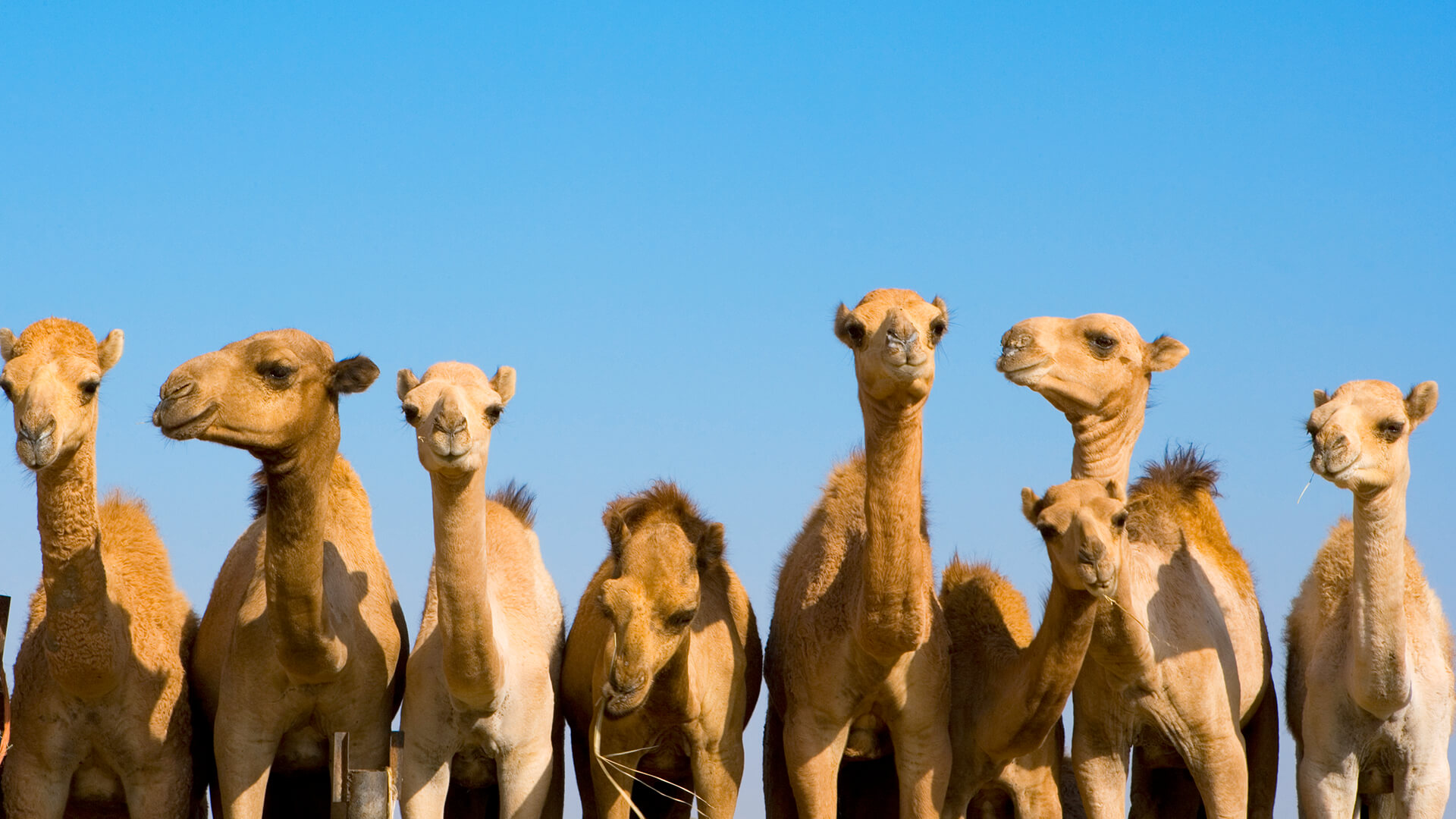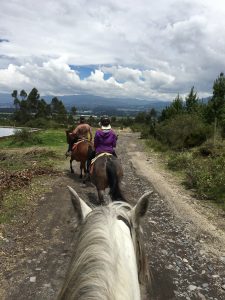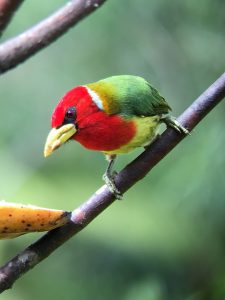What Horses, Camels, and Birdwatching Teach Us About Innovation

One of my favorite quotations is that a camel is a horse designed by a committee. This oft-repeated maxim serves as a succinct statement of the sub-optimization that can occur when one relies on a myriad of individual opinions to develop a solution. The story assumes that a group of people gets together with the mission of designing something that is sleek, elegant, fast, and strong, such as a horse. Once everyone sitting around the table discusses the horse and adds on his or her preferred options, the previously elegant solution will become encumbered with so many burdens (in an attempt to satisfy everyone at the table who has provided input) that the end result will be an ungainly, slow, and plodding creature such as a camel. I was reminded of this story on two recent trips I took this spring to countries where these animals figured prominently in daily life in certain regions. Encountering these creatures also forced me to stretch outside my usual boundaries yielding interesting results that are useful for the modern student of innovation.
As I have gotten older, I have noticed that the list of things that I generally do not do has grown longer, mainly because after a lifetime of experience I recognize that those activities are not worth the investment of time. Since time is a limited quantity that becomes more and more precious as one ages, I have found myself become more and more selective with how I invest that time. Unfortunately, this has meant that I sometimes prevent myself from exploring new ideas outside of my normal boundaries of operation and, as those of us in the innovation field know, this can be a recipe for repetitive thinking that may limit one’s ability to come up with new ideas.
History is replete with examples of where deviations from the normal course yielded intriguing, sometimes world-changing, results.
Callum Roberts, a leading marine scientist and conservation biologist, provides an example of this phenomenon of straying from the normal path in the story of the yacht captain Charles Moore. Moore was an experienced sailor who sailed his boat from Hawaii to California on a regular basis. One year, Moore decided to divert from his usual route, which meant that he crossed the now infamous Pacific Ocean gyre and saw the tons and tons of trash in the water. Concentrated there by the natural currents of the Pacific, the garbage gyre is the size of Texas and continues to grow. According to Roberts, Moore “was so stunned by the amount of garbage there that it changed the course of his life”.  Since that chance voyage, Moore has “dedicated his life to the study of plastics at sea, and […] is now a relentless campaigner for something to be done about them.â€
This chance deviation from a normal course reminds me of my recent trips to Ecuador and Morocco where I, albeit reluctantly, decided to violate three of my “policies†and agreed to try out horseback riding in the mountains, bird-watching in the cloud forest, and camel riding in the desert. I won’t bore the readers with the reasons why I hesitated to engage in these activities, but suffice it to say I was pleasantly surprised by these activities and was able to derive some lessons on innovation from the experiences.
Rely on Expertise
My typical areas of focus when traveling are archaeology, architecture, and history. Sometimes I am able to find a guide whose background aligns perfectly with these interests, as was the case last year in trips I made to Israel, Jordan, and Peru. My guide on a recent trip to Ecuador, Roberto, had knowledge in these areas but had spent the majority of his life raising and riding horses and leading birdwatching expeditions. Although we spent the requisite amount of time visiting locations that matched my initial interests, I agreed to add to our itinerary some activities that were more aligned to Roberto’s lifelong expertise. I will detail some of his advice on birdwatching and horseback riding below, but suffice it to say the results were amazing. Roberto grew up on a farm and interacted with horses from a young age, and continued to interact with horses almost daily in his present occupation, owning and caring for four horses that he paddocked at a friend’s stables. For the innovator, this serves as a reminder that no matter how well one purports to understand a subject, it is always important to seek out those whose expertise is deep and lifelong in an area. These individuals have a unique understanding of a subject, and while at first glance we may not see them as sources of innovative thinking, because they are more attuned to the “old†way of operating, the information they possess about a process or solution is definitely worth assessing.
Perform an Initial Study
When I told Roberto about my lack of any experience being around horses, he suggested that we spend a little time visiting with his personal horses before we went to the location where we would saddle up and head off on a ride. He wanted me to see how the horses behaved on their own and in a group, how they walked and ran through the fields, and how they naturally followed a lead horse to and from their stables. He showed me a Palomino horse that had learned how to untie a rope knot with her mouth so that she could open the gate of the stable. Interestingly, the Palomino was so cognizant of the eye contact of humans around that she would not do it if she saw that we were looking at her. I didn’t know it at the time but the lessons I was learning during this first interaction would be important for my ride the next day: horses are highly intelligent creatures, they have a natural tendency to follow a leader, they make eye contact, and they understand the concept of “home†and eagerly go there. I would experience all of these things the next day while riding a different horse, but because I had already absorbed these lessons they were second-nature to me which permitted me to focus on the more technical tasks at hand, such as holding the reins and steering the horse.
For the innovator, this reminds us of the importance of performing enough research upfront before diving into a project. The goal of the initial research should be to render various concepts and ideas second-nature so that one begins an innovation exploration with a subconscious understanding of the foundations of the exploration which allows one to focus one’s efforts on the more complex and challenging aspects of the innovation puzzle that one is trying to solve.
Approach from the Front
When we arrived at the stables the next day to ride, Roberto stressed the importance of always approaching a horse from the front. This is for two reasons. First, a kick from a horse’s hind legs could result in a very painful injury, so that area of a horse is definitely one to be avoided. Second, the positioning of a horse’s eyes mean that they can see well in front of them but not behind them, so it is important to approach from the front so as not to surprise them. For the innovator, the lesson here could be that when trying to approach a problem, we sometimes think that we need to be creative or even deceptive and try various angles of attack to work on a solution. While this may work in some cases, we should also think about how the problem is most amenable to solving. If the problem is best suited to a direct approach from the front, then we should not hesitate to adhere to that strategy. In fact, by trying to overthink our approach tactics, we may end up wasting valuable resources that would be better spent in diving directly into the actual problem-solving phase of the project.
Look in the Eyes and Get to Know Before Fully Engaging
Although I heeded Roberto’s advice and approached the horse properly from the front, I made a mistake by doing so while wearing my sunglasses, having forgotten the lesson of the Palomino and the importance of eye contact. Roberto noted that horses liked to see the eyes of humans and that by covering my eyes the horse was unable to gather a data point it would typically have in a first interaction with a new rider. Roberto also said that I should pet the horse on the side and talk to it after approaching to establish a relationship with it before stepping into the stirrup and climbing on the saddle. For the innovator, this action reminds us that however eager we are to rush into a work effort, we need to be cognizant of the fact that the people working with us are human beings and we need to establish relationships with them before we jump into the subject at hand. Often times we are so excited about an innovation project or we are so focused on solving a big, important problem that we rush through the normal process of people getting to know one another. This small investment of time upfront can yield positive returns in the long run in terms of making the team operate more efficiently.
Hold the Reins Firmly but not too Tightly
One I had climbed into the saddle, I then took the reins (Spanish style, in one hand, since we were in Ecuador) and began the very challenging task of trying to find the exact tension to use when holding the reins to both steer the horse and slow it as needed. This reminded me of the old adage from golf instruction in which a golfer is supposed to grip the golf club in a way that is tight but not too tight and loose but not too loose, as if one was holding a bird’s egg. In other words, there are many things in life where one has to be both firm and soft, and one has to find a very precise and exact balance between the two extremes. Finding that exact spot is hard to describe, but once one finds it, it can become second-nature. Steering to the left or right involved just the right amount of direction via the reins, as was the case with slowing down via pulling back, or nudging the horse forward with a gentle brushing of the heel of one’s shoe on the horse’s side (in a precise spot so as not to hurt the horse). This reminded me of the balance we strike in innovation between free-wheeling in brainstorming new ideas versus a more highly-structured process of guiding individuals to a specific outcome. It is hard to describe upfront how to strike this balance in innovation, but with experience we can get to the point where we realize when we are operating in the most effective way between the two extremes.
Give Reassurance while Riding
I never expected there to be so much verbal and physical interaction between a rider and a horse, but Roberto had prepared me for this in advance so I was ready. The most fascinating thing was that the horse’s ears turned back to point at me when I spoke to her. Unfortunately, I wasn’t speaking Spanish, but the horse could sense my tone and react accordingly. I gave her a lot of reassurance throughout the ride, including many pats on the neck when we successfully navigated some tough terrain, crossed a busy street, or avoided a large dump truck that went by on a dirt road. There was definitely a bond between even a brand-new rider and this horse, and I saw that the more encouragement I gave, the better the horse performed. For the innovation practitioner, this serves as a reminder of the importance of keeping a team engaged through encouragement. This is particularly important during those bleak periods when no one seems to be able to come up with a solution to a difficult problem, such as when a room full of creative individuals is staring at a blank whiteboard and unable to get moving on new ideas. Rather than focusing on one’s watch and fretting over how little time is left to find a solution, the innovation leader should think about ways to provide positive energy to the room to keep the participants engaged.
Stand vs Sit with Stirrups
I had read many times that the invention of the stirrup caused an end to feudalism in Europe (indeed a long story), but I did not truly understand why until I felt the different in riding positions between being seated on the saddle and standing up in the stirrups. Standing did not raise one’s height up much above sitting in terms of distance, but it was a remarkable difference in terms of how one could handle the horse moving over certain terrain at higher speeds. In terms of innovation, this reminded me of the importance of being seated in a chair while working versus standing up, particularly with the prominence of standing desks today.
Both positions are useful for certain activities, and for the innovator it is important to know when to use one or the other. I find that seating is needed for intense typing or reading, while standing or walking around can be conducive to ideation or puzzle-solving. Indeed, there are many examples where getting up and walking around resulted in great scientific discoveries. Callum Roberts, the marine biologist, notes that the first scientist to postulate that the burning of fossil fuels could lead to planetary warming was the Swedish chemist, Svante Arrhenius. Roberts notes that Arrhenius perhaps made his discovery that “atmospheric carbon dioxide could have played a key role in glaciations […] while tramping the icy streets of Uppsala one evening as the coal smoke from thousands of hearths wrapped around him.â€Â This also reminds us of James Watt’s famous stroll around Glasgow Green that led him to an epiphany about the steam engine, a walk that many historians believe launched the industrial revolution.

Trust the Horse to Choose the Best Path
This was perhaps the most fascinating aspect of horseback riding for me. Although I was ostensibly “guiding†the horse via the reins and my commands, the horse still had to make many micro-level navigational decisions on its own. By micro-level I mean the decisions on where to put each of its hooves as we moved across terrain that varied from dirt to gravel to road to rock. After riding for a while I noticed that the horse was very deliberate with each step and always made the best decision on where to go. I spend a lot of time mountain biking on rough terrain, and anyone who does this knows that the placement of one’s front tire is crucial to finding the safest and fastest path up or down a trail. The decisions have to be made by the cyclist quickly and repeatedly, as loose rocks and ruts (from washouts) vary on each ride.
The rider also has to think about where the back tire will hit as well, since it follows roughly the same path as the front (except when one does a sharp turn with the front wheel…the front tire may miss an obstacle but the back tire will still hit it). As I watched my horse navigate similar terrain (packed dirt and loose rocks), I was astonished to see that the horse, on its own, would pick the same line through loose rocks or washed out terrain that I would have picked had I been on a mountain bike on that exact same trail. The line was not always the most obvious path, either. Sometimes an initial step would be sub-optimal so that the next few steps would be easier, just as on a bike I might pick a line that looks worse for the initial set of rocks but positions me better for the next set of rocks.
The horse picked what I considered to be the “best†line every time, which I much appreciated as I was about six feet off the ground in my perch atop the saddle. For the innovator, this example provides two lessons. First, one should remember that there are “best†ways of accomplishing something, and these “best†ways may end up being simple or timeless approaches to solving problems that have been used for generations. This is why historical innovation is so important to me, because problem solving is something that the human species has been engaged in since the beginning of time. Second, this example should remind us that finding this “best†path may require one or two initial steps in a slightly different direction at first, so that one is better positioned for the ultimate pathway in the end.
Ignore Those Nipping at Our Heels
The pathway we followed on our horseback ride went through a poor neighborhood in the Cotopaxi region of Ecuador. Anyone who has visited Ecuador knows that there is an abundance of stray and loose dogs in these neighborhoods (and cities, too). I am a dog owner, so barking dogs did not phase me in the least, but I was worried about how the horse would react to small packs of dogs. The horse clearly noticed them, as I saw her head and ears turn towards the dogs. I gave her reassurance while the dogs were running alongside us, and used my limited Spanish to scold the dogs to get them to let us pass. The horse was so much larger than the dogs, and so high up, that she was able to traverse through their barking and yapping with little trouble.
From an innovation standpoint, this reminded me of how when we are engaged in an innovation effort, there will always be those who nip at our heels while we try to complete our work. The nipping can be in the form of distractions from other work priorities or from naysayers who do not think we will be successful in our efforts. Like the horse, we should be alert to these distractions but we should not let them redirect us from our objective.
Speed up When Almost Home
At the end of a ride in which we crossed a busy road, dealt with the aforementioned nipping dogs, climbed up and down rocky hills, moved to the side to allow a huge dump truck to pass, and forded a small stream, the horse, true to form, began to speed up once she recognized that she was getting close to her stables and would be home soon. At that point direction from me was almost irrelevant, as the horse knew where she was going. I see the same behavior at home when I am walking my dogs, and I assume this is the same sense of satisfaction that any of us feels when we turn our car on the final road that leads to our houses. For the innovation practitioner, the concept here is how an innovation effort can increase its pace and intensity as it nears the finish line. In other words, when planning on durations for tasks associated with innovation work, one should take into consideration that tasks performed later in the process, once a successful outcome is within one’s sights, may be performed more rapidly than tasks done at the outset when one has less of an understanding of where and when the effort will end.
Specialization
I mentioned at the beginning of this article that I recently rode a Dromedary camel in the Moroccan desert. It happened to be shortly after my horseback ride in Ecuador, so I was able to compare and contrast the two. The camel I rode was a stark contrast to the sleek, elegant Spanish horse in Ecuador. It did not allow any piloting by the rider. Rather, it was led by a rope by a young Berber on foot.
The camel was nonetheless a fascinating creature because it was so highly specialized for its environment. It is well-known that camels have amazing abilities to operate in desert climates in terms of their ability to go long distances without food or water and ability to see during blowing sandstorms (and protect themselves from intense sunlight) via their three eyelids. While riding, I was interested in comparing how the camel navigated sand dunes with its specialized feet. Camel feet are broad and flat, and, like the horse, the camel paid close attention to where each foot was placed as it plodded up and down sand dunes.
The fine, shifting, sands of the Moroccan desert, as I found out when I walked on my own, were challenging for bipeds and any slope encountered meant the possibility of sliding. The camel was happy to allow a foot to slide as it went down a hill, but its enormous feet provided traction in an environment where the elegant Spanish horse would have had quite a challenge. Although unsightly and definitely not able to provide a smooth ride, the camel met its purpose in traversing some challenging desert terrain.
For the innovator, this can serve as a reminder that the most elegant looking solution may not always be the best for a problem. One should focus on the particular problem that one is trying to solve, and while we often associate “innovation†with things that are shiny, new, or sleek, in the end our goal is to make things work better. In this case, the committee designing the camel actually did a good job for desert transportation.

Look for Birds with One’s Ears not Eyes
I mentioned earlier that in addition to his expertise on horses, my Ecuadoran guide Roberto was also an expert birdwatcher. While I respect the work done by birdwatchers in terms of photography, counting birds, differentiating between hundreds of different types of birds, and protecting species and habitats, I never thought that I wanted to spend time engaged in those activities. Roberto convinced me to go on a walk with him along with his scope, and I must say the experience was quite interesting.
A fundamental aspect of birdwatching, he noted, is that you look for birds with your ears, not your eyes. Birds are often small, fast creatures that are extremely hard to spot in trees or fields. Roberto’s method is to listen for the calls of birds then, based on his knowledge of the type of bird making the call and what type of habitat it prefers, he uses his ears to guide his eyes towards the area where the bird might be located.
In other words, hearing the bird’s call provides initial information about what to look for with one’s eyes. The ears can help triangulate the location, then the eyes can find the actual prize. For the innovator, this is a potentially useful concept in terms of how it inverts a common understanding in order to arrive at a better outcome.
When one is trying to solve a problem and struggling to find answers, it is sometimes helpful to look at the problem from a completely different perspective. Just as a birdwatcher might stare into some dense foliage for several minutes and never see the bird he or she is seeking, so, too, could the innovator and his or her team get bogged down trying to follow a particular path to a solution. In these instances, it may be better to regroup and approach the problem from a completely new, unorthodox perspective.
Leverage Technology with Process
One thing I noticed immediately when I interacted with birdwatchers was that I did not bring the appropriate equipment for the effort. Armed with large spotting scopes and expensive cameras with huge lenses, the real birdwatchers put those of us with only smartphone cameras to shame. However, I did learn that properly leveraging these components required a multi-step process to be successful. I had assumed that someone armed with a high-magnification scope could quickly use that to spot a bird and enjoy the close view of a beautiful creature.
The reality, though, was that one had to follow a process to be able to leverage this technology properly. Step one, as stated above, is to hear the bird then triangulate its location. Step two is to spot the bird with the naked eye and find a larger landmark nearby (such as a dead branch in the tree or a fence post). Step three is to train the powerful spotting scope or camera on that larger landmark then slowly move to the spot where the bird is perched.
Anytime I tried this in the wrong order, I was not successful in spotting the bird. The lesson here for the innovator is that one should remember that technology alone is not sufficient to guarantee a successful outcome. As innovators we tend to be fascinated with technology and may rely on it more than process.
Technology is important to what we do, but process, and innate human capabilities, must be part of our work efforts as well.
Don’t Forget the Metrics
With additional outings I began to appreciate and enjoy birdwatching during my trip, but I still had to experience one additional lesson in terms of how to engage properly in the activity. One of the easiest places to spot birds was at a hummingbird sanctuary where there were numerous feeders set up that were frequented by more hummingbirds than I had ever seen in my life. Although these birds were small and fast, their sheer ubiquity in this sanctuary meant that one was able to see them up close rather easily. Yet Roberto knew that it was not enough just to enjoy seeing these creatures come and go. He stated that there were 10 species of hummingbirds known to frequent this part of the Ecuadoran cloud forest, and he challenged me to count how many different species I saw during my viewing session.
This activity proved challenging because of the similarities of some of the hummingbirds, but in the end I was able to count eight different species. It was a rewarding experience, and reminded me of the importance of metrics in anything we do.
For the innovator, it’s not enough just to capture ideas. One has to also think about how to measure the work effort and track precisely how the team is performing.
image credits;Â animals.sandiegozoo.org;Â Author’s Photographs
Sources:
https://en.wikipedia.org/wiki/Design_by_committee
Callum Roberts, The Ocean of Life: the Fate of Man and the Sea (New York: Penguin Books, 2012).
https://www.theguardian.com/technology/2015/may/29/james-watt-sabbath-day-fossil-fuel-revolution-condenser
https://britishllamasociety.org/camelids/camels/camels.html
Wait! Before you go…
Choose how you want the latest innovation content delivered to you:
- Daily — RSS Feed — Email — Twitter — Facebook — Linkedin Today
- Weekly — Email Newsletter — Free Magazine — Linkedin Group
 Scott Bowden is an independent innovation analyst. Scott previously worked for IBM Global Services and Independent Research and Information Services Corporation. Scott has Ph.D. in Government/International Relations from Georgetown University. Follow him on Twitter @sgbowden
Scott Bowden is an independent innovation analyst. Scott previously worked for IBM Global Services and Independent Research and Information Services Corporation. Scott has Ph.D. in Government/International Relations from Georgetown University. Follow him on Twitter @sgbowden
NEVER MISS ANOTHER NEWSLETTER!
LATEST BLOGS
Four ways you can ensure employees take accountability for their work
One of the most important driving factors for any successful business is a high-performing team. Having people working for you…
Read MoreWhat is digital upskilling and why is it important?
Photo by Annie Spratt on Unsplash In a world of business that never stands…
Read More



